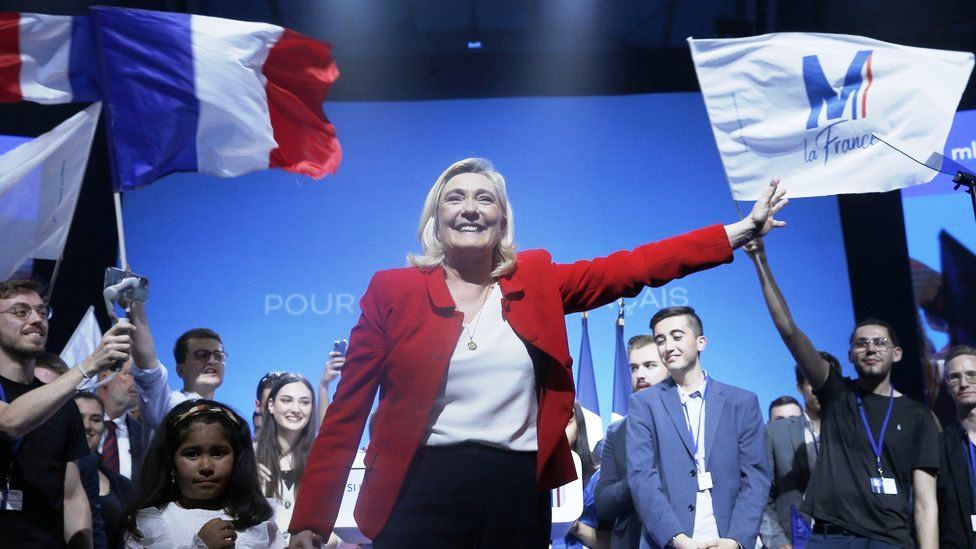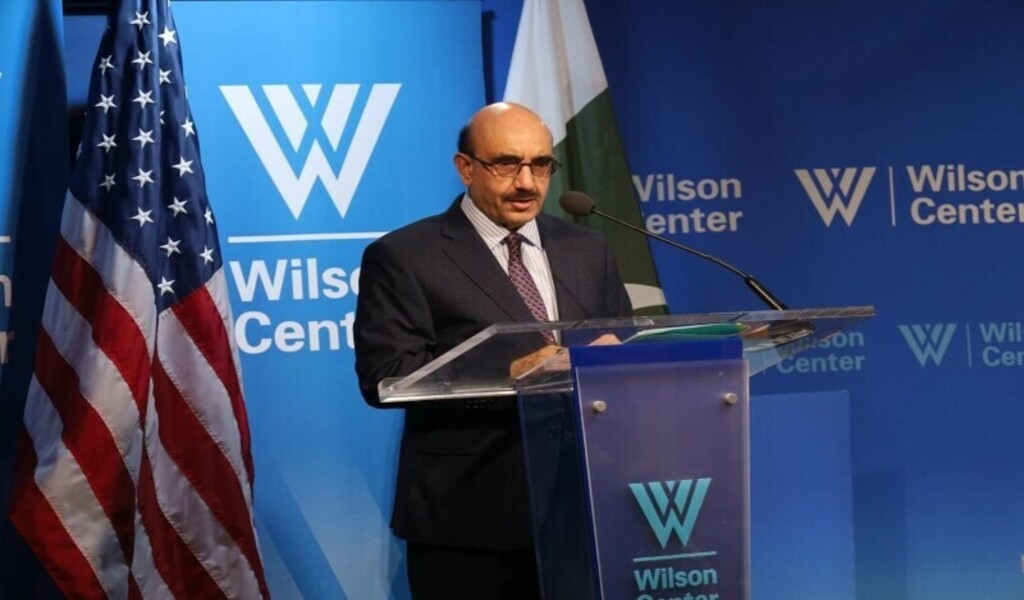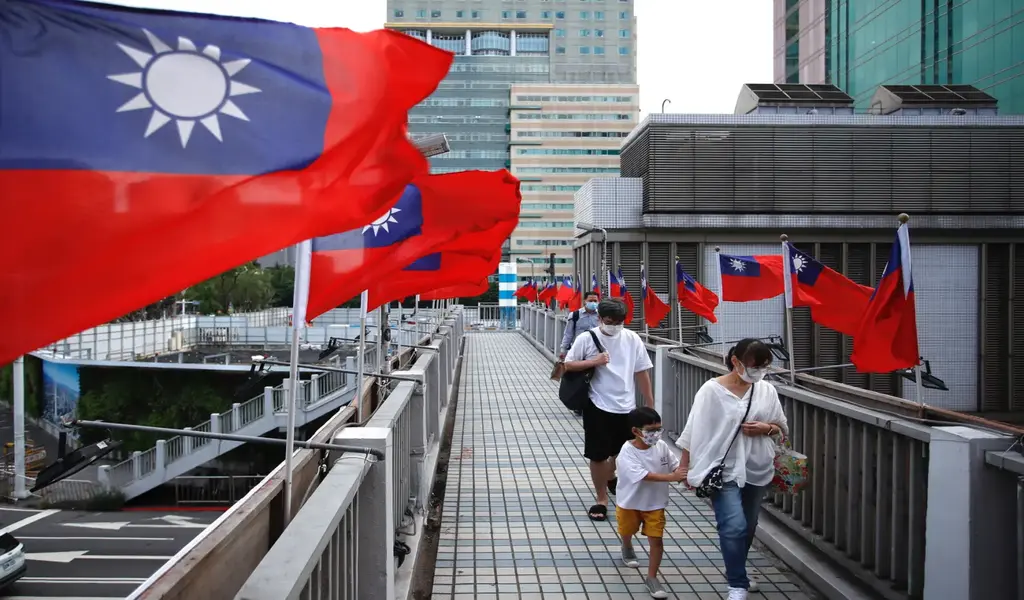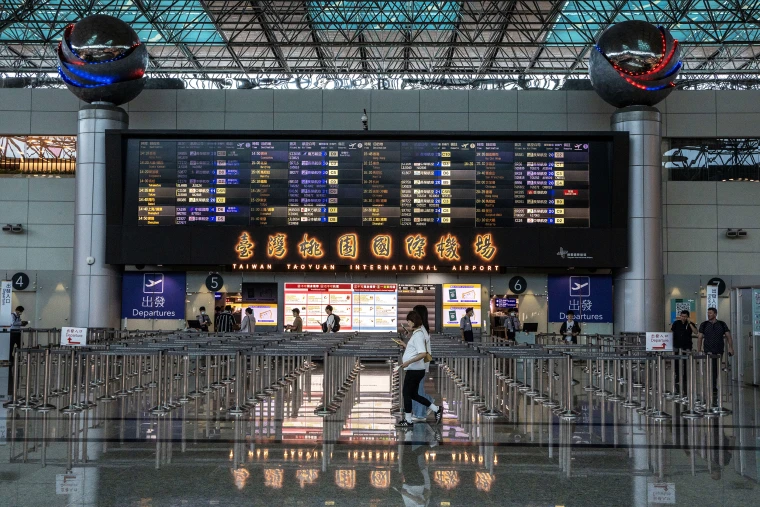World News
U.S. Flies Bombers and Fighter Jets Over South Korea In Show Of Force To North Korea

U.S. Flies Bombers Over South Korea In Show Of Force To North Korea
–
SEOUL – The United States flew some of its most advanced warplanes in bombing drills with ally South Korea on Thursday, a clear warning after North Korea launched a midrange ballistic missile designed to carry nuclear bombs over Japan earlier this week, the U.S. and South Korean militaries said. North Korea hates such displays of U.S. military might at close range and will likely respond with fury.
Two U.S. B-1B supersonic bombers and four F-35B stealth fighter jets joined four South Korean F-15 fighters in live-fire exercises at a military field in eastern South Korea that simulated precision strikes against the North’s “core facilities,” according to the U.S. Pacific Command and South Korea’s Defense Ministry. The B-1Bs were flown in from Andersen Air Force Base in Guam while the F-35Bs came from a U.S. base in Iwakuni, Japan.
The North, which claims Washington has long threatened Pyongyang by flaunting the powerful U.S. nuclear arsenal, describes the long-range B-1Bs as “nuclear strategic bombers” although the United States no longer arms them with nuclear weapons. A strong North Korean reaction to the drills is almost certain.
The dueling military displays open up the risk that things will get worse as each side seeks to show it won’t be intimidated.
North Korea has made it clear that it sees its weapons program, which demands regular testing to perfect, as the only way to contest decades of U.S. hostility, by which it means the huge U.S. military presence in South Korea, Japan and the Pacific. Washington, in turn, seeks with its joint drills with Seoul and bomber flights to show that it will not be pushed from its traditional role of supremacy in the region. More missile tests, more bomber flyovers and three angry armies facing each other across the world’s most heavily armed border raises the possibility that a miscalculation could lead to real fighting.
The U.S. Pacific Command said the exercises were conducted in direct response to North Korea’s recent missile launch. Over the course of a 10-hour mission, the B-1Bs, F-35Bs and two Japanese F-15 fighters first flew together over waters near Kyushu, Japan. The U.S. and South Korean warplanes then flew across the Korean Peninsula and participated in the live-fire training before returning to their respective home stations, according to the Pacific Command.
“North Korea’s actions are a threat to our allies, partners and homeland, and their destabilizing actions will be met accordingly,” Gen. Terrence J. O’Shaughnessy, commander of the U.S. Pacific Air Forces, said in a statement. “This complex mission clearly demonstrates our solidarity with our allies and underscores the broadening cooperation to defend against this common regional threat. Our forward-deployed force will be the first to the fight, ready to deliver a lethal response at a moment’s notice if our nation calls.”
In Beijing, North Korea’s ally China warned that war is not an option in finding a solution to Pyongyang’s growing nuclear capabilities.
Defense Ministry spokesman Col. Ren Guoqiang told reporters that all parties should exercise restraint and avoid words and actions that escalate tension.
The bombing exercise came as the United States and South Korea wrapped up their annual Ulchi Freedom Guardian joint military drills that involved tens of thousands of soldiers. North Korea condemns the annual U.S.-South Korea war games as rehearsals for an invasion and described Tuesday’s launch over Japan as a countermeasure against the drills. Washington and Seoul faced calls to postpone or downsize this year’s drills.
The United States often sends its warplanes to South Korea, mostly for patrols, when animosity rises on the Korean Peninsula, which is technically in a state of war because the 1950-53 Korean War ended with an armistice, not a peace treaty.
North Korea on Tuesday flew a potentially-nuclear capable Hwasong-12 intermediate range missile over northern Japan and later called it a “meaningful prelude” to containing the U.S. territory of Guam. North Korean leader Kim Jong Un said the launch was a “curtain-raiser of its resolute countermeasures” against the U.S.-South Korea war games and called for his military to conduct more ballistic missile launches targeting the Pacific Ocean.
North Korea has been maintaining a torrid pace in weapons tests this year as it openly pursues an arsenal of nuclear-armed, intercontinental ballistic missiles capable of reaching deep into the U.S. mainland. Experts say Kim wants a real nuclear deterrent against the United States to ensure the survival of his government and likely believes that it will strengthen his negotiating position when North Korea returns to talks.
Pyongyang had earlier threatened to fire a salvo of Hwasong-12s toward Guam, which is home to key U.S. military bases and strategic long-range bombers the North finds threatening. It also flight tested a pair of developmental ICBMs in July.
South Korean analysts said that the North’s threat against Guam and the launch over Japan on Tuesday are likely attempts to make launches over Japan an accepted norm and win itself greater military space in a region dominated by enemies.
The U.S. and South Korean militaries say the Hwasong-12 the North fired over the northern Japanese island of Hokkaido flew for about 2,700 kilometers (1,677 miles). South Korea’s Vice Defense Minister Suh Choo-suk told lawmakers on Thursday that the North might have fired the missile at about half its maximum range.

World News
Marine Le Pen’s National Rally Wins the First Round in France 2024 Election

Exit polls in France showed that Marine Le Pen’s right-wing National Rally (RN) party made huge gains to win the first round of election on Sunday. However, the final outcome will depend on how people trade votes in the days before next week’s run-off.
Exit polls from Ipsos, Ifop, OpinionWay, and Elabe showed that the RN got about 34% of the vote. This was a big loss for President Emmanuel Macron, who called the early election after his party lost badly in the European Parliament elections earlier this month.
The National Rally (RN) easily won more votes than its opponents on the left and center, including Macron’s Together group, whose bloc was predicted to get 20.5% to 23% of the vote. Exit polls showed that the New Popular Front (NFP), a hastily put together left-wing alliance, would get about 29% of the vote.
The results of the exit polls matched what people said in polls before the election, which made Le Pen’s fans very happy. But they didn’t say for sure if the anti-immigrant, anti-EU National Rally (RN) will be able to “cohabit” with the pro-EU Macron in a government after the runoff election next Sunday.
Voters in France Angry at Macron
Many French people have looked down on the National Rally (RN) for a long time, but now it is closer to power than it has ever been. A party known for racism and antisemitism has tried to clean up its image, and it has worked. Voters are angry at Macron, the high cost of living, and rising concerns about immigration.
Fans of Marine Le Pen waved French flags and sang the Marseillaise in the northern French district of Henin-Beaumont. The crowd cheered as Le Pen said, “The French have shown they are ready to turn the page on a power that is disrespectful and destructive.”
The National Rally’s chances of taking power next week will rest on what political deals its opponents make in the next few days. Right-wing and left-wing parties used to work together to keep the National Rally (RN) out of power, but the “republican front,” which refers to this group, is less stable than ever.
If no candidate gets 50% of the vote in the first round, the top two candidates and anyone else with 12.5% of the registered voters immediately move on to the second round. The district goes to the person who gets the most votes in the runoff.
France is likely to have a record number of three-way runoffs because so many people voted on Sunday. Experts say that these are much better for the National Rally (RN) than two-way games. Almost right away on Sunday night, the horse trade began.
Macron asked people to support candidates who are “clearly republican and democratic.” Based on what he has said recently, this would rule out candidates from the National Rally (RN) and the hard-left France Unbowed (LFI) party. Leaders on the far left and the center left both asked their third-placed candidates to drop out.
Minority government
Jean-Luc Melenchon, leader of France Unbowed, said, “Our rule is simple and clear: not a single more vote for the National Rally.” But the center-right Republicans party, which split before the vote when some of its members joined the RN, didn’t say anything.
The president of the RN party, Jordan Bardella, who is 28 years old, said he was ready to be prime minister if his party gets a majority of seats. He has said he won’t try to make a minority government, and neither Macron nor the communist NFP will work with him.
“I will be a “cohabitation” Prime Minister, respectful of the constitution and of the office of President of the Republic, but uncompromising about the policies we will implement,” he said.
A few thousand anti-RN protesters met in Paris’s Republique square on Sunday night for a rally of the leftist alliance. The mood was gloomy.
Niya Khaldi, a 33-year-old teacher, said that the RN’s good results made her feel “disgust, sadness, and fear.”
“This is not how I normally act,” she said. “I think I came to reassure myself, to not feel alone.”
Election Runoff
The result on Sunday didn’t have much of an effect on the market. In early Asia-Pacific trade, the euro gained about 0.23%. Fiona Cincotta, a senior markets expert at City Index in London, said she was glad the outcome “didn’t come as a surprise.”
“Le Pen had a slightly smaller margin than some of the polls had pointed to, which may have helped the euro a little bit higher on the open,” she noted. “Now everyone is waiting for July 7 to see if the second round supports a clear majority or not. So it does feel like we’re on the edge of something.”
Some pollsters thought the RN would win the most seats in the National Assembly, but Elabe was the only one who thought the party would win all 289 seats in the run-off. Seat projections made after the first round of voting are often very wrong, and this race is no exception.
On Sunday night, Reuters reported there were no final results for the whole country yet, but they were due in the next few hours. In France, exit polls have usually been very accurate.
Voter turnout was high compared to previous parliamentary elections. This shows how passionate people are about politics after Macron made the shocking and politically risky decision to call a vote in parliament.
Mathieu Gallard, research head at Ipsos France, said that at 1500 GMT, nearly 60% of voters had turned out, up from 39.42% two years earlier. This was the highest comparable turnout since the 1986 legislative vote. It wasn’t clear when the official number of people who voted would be changed.
World News
Pakistan Seeks US Support for Counter-Terrorism Operation Azm-e-Istehkam

(CTN News) – Pakistan’s Ambassador to the United States, Masood Khan, has urged Washington to provide Pakistan with sophisticated small arms and communication equipment to ensure the success of Operation Azm-e-Istehkam, a newly approved counter-terrorism initiative in the country.
The federal government recently approved the reinvigorated national counter-terrorism drive, which comprises three components: doctrinal, societal, and operational.
Ambassador Khan noted that work on the first two phases has already begun, with the third phase set to be implemented soon.
Addressing US policymakers, scholars, and corporate leaders at the Wilson Center in Washington, Khan emphasized the importance of strong security links, enhanced intelligence cooperation, and the resumption of sales of advanced military platforms between Pakistan and the US.
He argued that this is crucial for regional security and countering the rising tide of terrorism, which also threatens the interests of the US and its allies.
“Pakistan has launched Azm-i-Istehkam […] to oppose and dismantle terrorist networks. For that, we need sophisticated small arms and communication equipment,” said Ambassador Khan.
Pakistan–United States relations
The ambassador observed that the prospects of Pakistan-United States relations were bright, stating that the two countries “share values, our security and economic interests are interwoven, and it is the aspiration of our two peoples that strengthens our ties.”
He invited US investors and businesses to explore Pakistan’s potential in terms of demographic dividend, technological advancements, and market opportunities.
Khan also suggested that the US should consider Pakistan as a partner in its diplomatic efforts in Kabul and collaborate on counterterrorism and the rights of women and girls in Afghanistan.
He stressed that the bilateral relationship should be based on ground realities and not be hindered by a few issues.
“We should not base our engagement on the incongruity of expectations.
Our ties should be anchored in ground realities, even as we aim for stronger security and economic partnerships. Secondly, one or two issues should not hold the entire relationship hostage,” said the ambassador.
World News
China Urges Taiwanese to Visit Mainland ‘Without Worry’ Despite Execution Threat

China has reassured Taiwanese citizens that they can visit the mainland “without the slightest worry”, despite Taiwan raising its travel alert to the second-highest level in response to Beijing’s new judicial guidelines targeting supporters of Taiwanese independence.
Last week, China published guidelines that could impose the death penalty for “particularly serious” cases involving “diehard” advocates of Taiwanese independence.
In response, Taiwan’s government urged the public to avoid “unnecessary travel” to mainland China and Hong Kong, and raised its travel warning to the “orange” level.
However, Zhu Fenglian, a spokeswoman for a Chinese body overseeing Taiwan affairs, stated that the new directives are “aimed solely at the very small number of supporters of ‘Taiwan independence’, who are engaged in malicious acts and utterances”.
She emphasized that “the vast majority of Taiwan compatriots involved in cross-strait exchanges and cooperation do not need to have the slightest worry when they come to or leave mainland China”.
“They can arrive in high spirits and leave fully satisfied with their stay,” Zhu added.

What’s Behind The China-Taiwan Tensions?
The tensions stem from the longstanding dispute over Taiwan’s status. Mainland China claims Taiwan as part of its territory and has refused to rule out using force to bring the democratic island under its control, while Taiwan sees itself as a sovereign state.
Beijing has not conducted top-level communications with Taipei since 2016, when the Democratic Progressive Party’s Tsai Ing-wen became Taiwan’s leader. China has since branded her successor, President Lai Ching-te, a “dangerous separatist”.
“The DPP authorities have fabricated excuses to deceive the people on the island and incite confrontation and opposition,” Zhu said in her statement.
Despite the political tensions, many Taiwanese continue to travel to mainland China for work, study, or business.
-

 News3 years ago
News3 years agoLet’s Know About Ultra High Net Worth Individual
-
Entertainment2 years ago
Mabelle Prior: The Voice of Hope, Resilience, and Diversity Inspiring Generations
-

 Health4 years ago
Health4 years agoHow Much Ivermectin Should You Take?
-

 Tech2 years ago
Tech2 years agoTop Forex Brokers of 2023: Reviews and Analysis for Successful Trading
-

 Lifestyles3 years ago
Lifestyles3 years agoAries Soulmate Signs
-

 Movies2 years ago
Movies2 years agoWhat Should I Do If Disney Plus Keeps Logging Me Out of TV?
-

 Health3 years ago
Health3 years agoCan I Buy Ivermectin Without A Prescription in the USA?
-

 Learning3 years ago
Learning3 years agoVirtual Numbers: What Are They For?